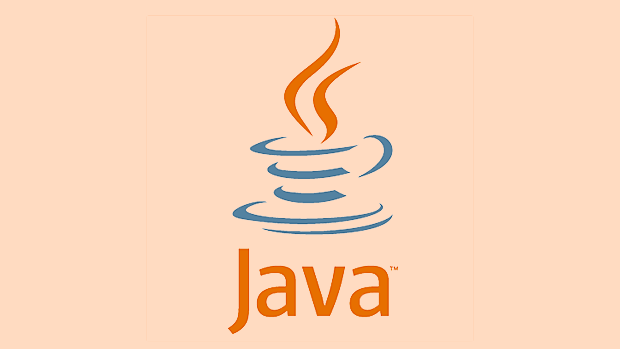Writing a High-Performance TCP Server in Java
Jul 30, 2025 am 01:42 AMTo build a high-performance Java TCP server, you should use the Netty framework instead of the original NIO; 1. Use Netty's event loop group to manage connections and I/O; 2. Use efficient serialization such as Protobuf to avoid Java native serialization; 3. Enable backpressure control to prevent buffer overflow through Channel.isWritable(); 4. Reuse objects and PooledByteBufAllocator to reduce GC; 5. Configure TCP options such as TCP_NODELAY and appropriate buffer size to reduce latency; combine stress testing and monitoring to ensure low latency and high throughput, and ultimately achieve efficient processing of tens of thousands of concurrent connections.

Writing a high-performance TCP server in Java isn't just about accepting connections — it's about efficiently handling thousands of concurrent clients with minimal latency and resource usage. While Java provides solid abstractions for networking, building something scalable requires understanding the right tools and patterns. Here's how to do it right.

Use NIO with Non-Blocking I/O (java.nio)
Traditional Java servers using java.net.ServerSocket and one-thread-per-client models don't scale beyond a few hundred connections due to thread overhead. The solution? Java NIO (Non-blocking I/O).
NIO allows a single thread to manage multiple connections via multiplexing using Selector , Channel , and non-blocking sockets.

Key components:
-
ServerSocketChannel– Listens for incoming TCP connections. -
SocketChannel– Handles data transfer for each client. -
Selector– Monitors multiple channels for events (accept, read, write) without blocking. -
SelectionKey– Tracks the state of a channel registered with a selector.
This model enables the Reactor pattern , where a small number of threads handle many connections.

Selector selector = Selector.open(); ServerSocketChannel serverChannel = ServerSocketChannel.open(); serverChannel.bind(new InetSocketAddress(8080)); serverChannel.configureBlocking(false); serverChannel.register(selector, SelectionKey.OP_ACCEPT);
Now a single thread can loop over selector.select() , handling only ready events.
Leverage Netty for Production Systems
While raw NIO is powerful, it's low-level and error-prone. For real-world high-performance servers, Netty is the de facto standard.
Netty abstracts the complexity of NIO and provide:
- Event loop groups (boss and worker threads)
- Efficient byte buffer management
- Built-in codecs for common protocols
- Backpressure support
- Memory pooling and zero-copy techniques
Example of a simple Netty server:
EventLoopGroup bossGroup = new NioEventLoopGroup(1);
EventLoopGroup workerGroup = new NioEventLoopGroup();
try {
ServerBootstrap b = new ServerBootstrap();
b.group(bossGroup, workerGroup)
.channel(NioServerSocketChannel.class)
.childHandler(new ChannelInitializer<SocketChannel>() {
@Override
protected void initChannel(SocketChannel ch) {
ch.pipeline().addLast(new YourRequestHandler());
}
});
ChannelFuture f = b.bind(8080).sync();
f.channel().closeFuture().sync();
} finally {
bossGroup.shutdownGracefully();
workerGroup.shutdownGracefully();
}Netty automatically handles threading, I/O multiplexing, and lifecycle events — all optimized for throughput and low GC pressure.
Optimize for Performance: Key Tips
Even with the right framework, performance depends on how you use it.
1. Tune Thread Pool Sizes
- Use one boss group (acceptor threads) — usually 1 or 2.
- Worker threads should match available CPU cores (or slightly more if doing I/O waits).
- Avoid creating new threads per task; reuse Netty's event loops.
2. Use Efficient Serialization
- Avoid heavy formats like Java serialization.
- Prefer binary protocols: Protobuf , Kryo , or MessagePack .
- Reuse buffers when possible (
ByteBufin Netty).
3. Handle Backpressure
- Don't let fast producers overwhelm slow consumers.
- Use flow control: pause reading from socket when processing queue is full.
- Netty's
Channel.isWritable()helps detect when the outbound buffer is overloaded.
4. Minimize Garbage
- Reuse objects (eg, decode buffers, message containers).
- Use Netty's
PooledByteBufAllocatorto reduce GC. - Avoid logging every message in production.
5. Set Proper TCP Options
.childOption(ChannelOption.SO_KEEPALIVE, true) .childOption(ChannelOption.TCP_NODELAY, true) // Disable Nagle's algorithm for low latency .childOption(ChannelOption.SO_RCVBUF, 64 * 1024) .childOption(ChannelOption.SO_SNDBUF, 64 * 1024)
TCP_NODELAY is cruel for real-time apps — it prevents small packet delays.
Monitor and Stress Test
A high-performance server must be validated:
- Use tools like wrk , JMeter , or gatling for load testing.
- Monitor:
- Latency percentages (p99, p999)
- Throughput (requests/sec)
- GC pauses
- Thread contention
- Profile with Async-Profiler or JFR (Java Flight Recorder) .
Even a small bottleneck (like synchronized blocks or logging) can tank performance under load.
Basically, raw NIO gives you control, but Netty gives you speed, stability, and scalability out of the box. Combine it with smart tuning and monitoring, and you've got a TCP server that can handle tens of thousands of connections efficiently.
The above is the detailed content of Writing a High-Performance TCP Server in Java. For more information, please follow other related articles on the PHP Chinese website!

Hot AI Tools

Undress AI Tool
Undress images for free

Undresser.AI Undress
AI-powered app for creating realistic nude photos

AI Clothes Remover
Online AI tool for removing clothes from photos.

Clothoff.io
AI clothes remover

Video Face Swap
Swap faces in any video effortlessly with our completely free AI face swap tool!

Hot Article

Hot Tools

Notepad++7.3.1
Easy-to-use and free code editor

SublimeText3 Chinese version
Chinese version, very easy to use

Zend Studio 13.0.1
Powerful PHP integrated development environment

Dreamweaver CS6
Visual web development tools

SublimeText3 Mac version
God-level code editing software (SublimeText3)

Hot Topics
 A Developer's Guide to Maven for Java Project Management
Jul 30, 2025 am 02:41 AM
A Developer's Guide to Maven for Java Project Management
Jul 30, 2025 am 02:41 AM
Maven is a standard tool for Java project management and construction. The answer lies in the fact that it uses pom.xml to standardize project structure, dependency management, construction lifecycle automation and plug-in extensions; 1. Use pom.xml to define groupId, artifactId, version and dependencies; 2. Master core commands such as mvnclean, compile, test, package, install and deploy; 3. Use dependencyManagement and exclusions to manage dependency versions and conflicts; 4. Organize large applications through multi-module project structure and are managed uniformly by the parent POM; 5.
 How to use Java MessageDigest for hashing (MD5, SHA-256)?
Jul 30, 2025 am 02:58 AM
How to use Java MessageDigest for hashing (MD5, SHA-256)?
Jul 30, 2025 am 02:58 AM
To generate hash values using Java, it can be implemented through the MessageDigest class. 1. Get an instance of the specified algorithm, such as MD5 or SHA-256; 2. Call the .update() method to pass in the data to be encrypted; 3. Call the .digest() method to obtain a hash byte array; 4. Convert the byte array into a hexadecimal string for reading; for inputs such as large files, read in chunks and call .update() multiple times; it is recommended to use SHA-256 instead of MD5 or SHA-1 to ensure security.
 Building RESTful APIs in Java with Jakarta EE
Jul 30, 2025 am 03:05 AM
Building RESTful APIs in Java with Jakarta EE
Jul 30, 2025 am 03:05 AM
SetupaMaven/GradleprojectwithJAX-RSdependencieslikeJersey;2.CreateaRESTresourceusingannotationssuchas@Pathand@GET;3.ConfiguretheapplicationviaApplicationsubclassorweb.xml;4.AddJacksonforJSONbindingbyincludingjersey-media-json-jackson;5.DeploytoaJakar
 Developing a Blockchain Application in Java
Jul 30, 2025 am 12:43 AM
Developing a Blockchain Application in Java
Jul 30, 2025 am 12:43 AM
Understand the core components of blockchain, including blocks, hashs, chain structures, consensus mechanisms and immutability; 2. Create a Block class that contains data, timestamps, previous hash and Nonce, and implement SHA-256 hash calculation and proof of work mining; 3. Build a Blockchain class to manage block lists, initialize the Genesis block, add new blocks and verify the integrity of the chain; 4. Write the main test blockchain, add transaction data blocks in turn and output chain status; 5. Optional enhancement functions include transaction support, P2P network, digital signature, RESTAPI and data persistence; 6. You can use Java blockchain libraries such as HyperledgerFabric, Web3J or Corda for production-level opening
 css dark mode toggle example
Jul 30, 2025 am 05:28 AM
css dark mode toggle example
Jul 30, 2025 am 05:28 AM
First, use JavaScript to obtain the user system preferences and locally stored theme settings, and initialize the page theme; 1. The HTML structure contains a button to trigger topic switching; 2. CSS uses: root to define bright theme variables, .dark-mode class defines dark theme variables, and applies these variables through var(); 3. JavaScript detects prefers-color-scheme and reads localStorage to determine the initial theme; 4. Switch the dark-mode class on the html element when clicking the button, and saves the current state to localStorage; 5. All color changes are accompanied by 0.3 seconds transition animation to enhance the user
 How to convert an Array to a List in Java?
Jul 30, 2025 am 01:54 AM
How to convert an Array to a List in Java?
Jul 30, 2025 am 01:54 AM
Converting an array into a list in Java requires selecting methods based on the data type and requirements. ① Use Arrays.asList() to quickly convert an object array (such as String[]) into a fixed-size List, but elements cannot be added or deleted; ② If you need a mutable list, you can encapsulate the result of Arrays.asList() through the ArrayList constructor; ③ For basic type arrays (such as int[]), you need to use StreamAPI conversion, such as Arrays.stream().boxed().collect(Collectors.toList()); ④ Notes include avoiding null arrays, distinguishing basic types from object types, and explicitly returning columns
 python property decorator example
Jul 30, 2025 am 02:17 AM
python property decorator example
Jul 30, 2025 am 02:17 AM
@property decorator is used to convert methods into properties to implement the reading, setting and deletion control of properties. 1. Basic usage: define read-only attributes through @property, such as area calculated based on radius and accessed directly; 2. Advanced usage: use @name.setter and @name.deleter to implement attribute assignment verification and deletion operations; 3. Practical application: perform data verification in setters, such as BankAccount to ensure that the balance is not negative; 4. Naming specification: internal variables are prefixed, property method names are consistent with attributes, and unified access control is used to improve code security and maintainability.
 css full page layout example
Jul 30, 2025 am 05:39 AM
css full page layout example
Jul 30, 2025 am 05:39 AM
Full screen layout can be achieved using Flexbox or Grid. The core is to make the minimum height of the page the viewport height (min-height:100vh); 2. Use flex:1 or grid-template-rows:auto1frauto to make the content area occupy the remaining space; 3. Set box-sizing:border-box to ensure that the margin does not exceed the container; 4. Optimize the mobile experience with responsive media query; this solution is compatible with good structure and is suitable for login pages, dashboards and other scenarios, and finally realizes a full screen page layout with vertical centering and full viewport.






